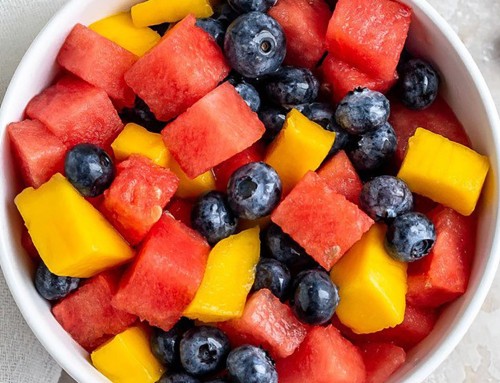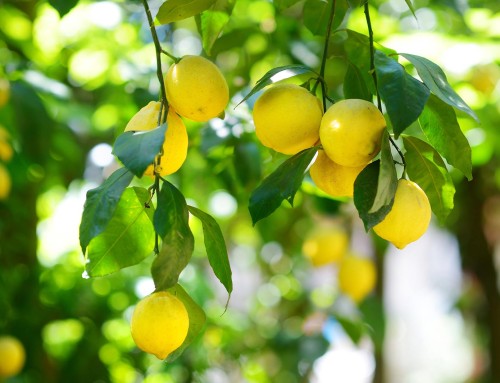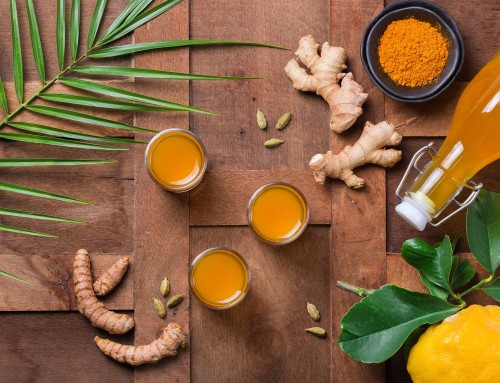Ayurveda Diet, Food and Spices
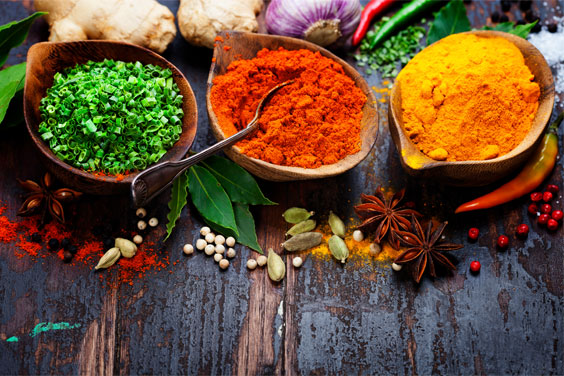
According to Ayurveda, intake of appropriate and nutritious food is the first step to good health.
Food is seen as a prime preventive medicine. And this is not just eating the right foods, but also eating them in the correct combination and quantity.
Nutritious food helps us maintain the internal balance of elements. Herbs too, could be grouped into foods. Once the properties of various foods and herbs are understood, Ayurvedic principles can be applied to your daily diet as well as on those occasions when you feel unwell.
Not following a proper diet or eating routine inevitably creates an imbalance of doshas, with symptoms experienced in the dhatus (tissues), agnis (digestive processes) and malas (waste products).
Ayurveda also advises that most diseases can be traced to an inadequate diet and improper eating. Poor nutrition or eating habits also disrupt any treatment or therapies undertaken, essentially working against efforts made to retain a balanced state. Therefore, following dietary advice is an important aspect of any treatment for sickness and disease.
Food and Spices
The “spice-box” is an intrinsic part of an Indian kitchen. Other cultures around the world have their favourite spices and herbs as well.
The exotic colours and heady aromas of spices can elevate an ordinary dish into a sublime feast for the senses.
Most spices also come with therapeutic properties, so every meal that includes spices can become an experience in enhancing health and wellbeing.
Ayurveda has been singing the praises of spices as “wonder-foods” for thousands of years. Spices are ingredients in many synergistic Ayurvedic herbal formulations, and an Ayurvedic expert, when giving you advice, is as likely to recommend specific spices to include in your diet as to suggest herbal supplements for you to take. Including all six tastes—sweet, sour, salty, bitter, pungent and astringent—at every main meal is a basic tenet of Ayurvedic dietary wisdom, and spices are a convenient, flavourful way of accomplishing this.
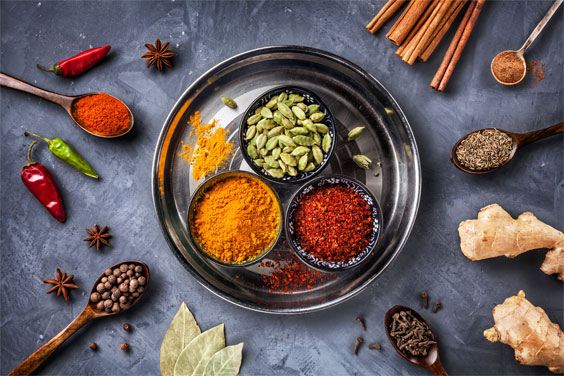
General Tips for Cooking with Spices
Most spices are potent, so a little goes a long way. You want the spices to enhance the flavours of foods, not overpower the whole dish.
When blending several spices in a dish, experiment to find which combinations you like. Be adventurous! A good Ayurvedic cookbook, such as Heaven’s Banquet by Miriam Hospodar, can get you started with suggestions for using spices that are especially balancing for mind and body in each season.
With ‘Maharishi AyurVeda Seasoning Blends’ this has been done for you. The wisdom of the Ayurvedic Vaidyas (physicians) has been incorporated into convenient blends that utilize the healing benefit of spices in your daily diet.
Many spices release their flavours and aromas best when sautéed in Ghee (clarified butter) or oil, some when they are dry-roasted. Be nimble when sautéing or roasting spices, they tend to burn quickly. Remove from heat when aromas are released and continue stirring or shaking to prevent burning.
Look for organic, non-irradiated spices that are as fresh as possible (check use by dates), and store spices in airtight containers away from heat and light.
Ayurvedic Spices – Three Gems from the Syurveda Treasure Chest
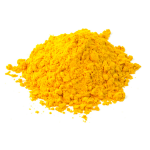
Turmeric
Turmeric is an important spice in Ayurveda. It is ubiquitous in Ayurvedic cooking. It contains the flavanoid curcumin, which is known to have anti-inflammatory properties.
This all-around wonder spice helps detoxify the liver, balance cholesterol levels, fight allergies, stimulate digestion, boost immunity and enhance the complexion. It is also an antioxidant. Ayurveda recognizes it as a heating spice, contributing bitter, pungent and astringent tastes.
Turmeric is a bright yellow-orange spice, and, used in tiny quantities, imparts a rich colour and look to cooked white rice, potatoes or yellow lentils. Add it to the water in which rice or lentils are being cooked. It combines well with other spices such as cumin, coriander, cayenne pepper and fennel. Turmeric can stain fabrics and other materials, so handle carefully.
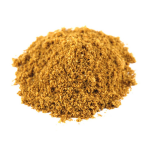
Cumin
Cumin is popular in Indian, Mexican and Middle Eastern cuisines. According to Ayurveda, it is a warming spice. It aids digestion and help flush toxins out of the body.
Cumin can be used either as whole seeds or ground, raw or dry-roasted. Ground raw, it is a dull brown colour, which is enriched by being sautéed in Ghee or oil. Powdered dry-roasted cumin is a rich brown in colour. Both sautéing and roasting make the aroma and flavour of cumin come alive. Cumin combines well with a wide range of other spices, including turmeric, ground fennel, ground coriander, ground dry ginger and cinnamon.
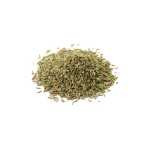
Fennel
Fennel is a cooling spice. According to Ayurveda, fennel is extremely good for digestion.
In India, eating a few fennel seeds after a meal is a common practice. Fennel seeds are sweetish in taste, and ground fennel works very well in sauces. The seeds can also be sautéed in Ghee (clarified butter) and added to vegetable dishes.
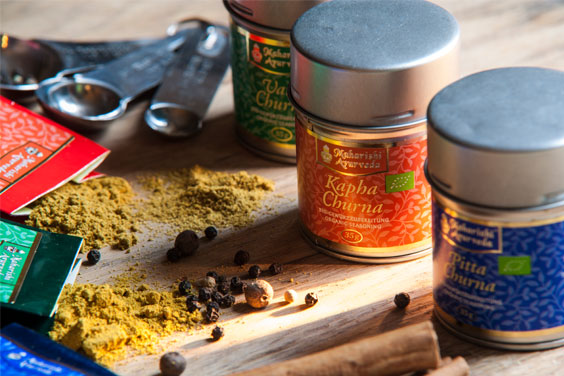
The Churnas – Specially prepared Ayurveda spice blends add flavour and balance
Spices are not just great flavour-enhancers, they come with therapeutic properties as well. Maharishi AyurVeda Churnas are precise blends of spices and seasonings that include all six Ayurvedic tastes.
Vata Aromatic Seasoning
This is an aromatic and tangy blend suitable for use on Vata increasing food such as cabbage, broccoli, corn, grains and salads
Dried ground Ginger is a warming spice, contributing the pungent taste. It is useful in aiding digestion, enhancing appetite and pacifying stomach disorders.
Turmeric is ubiquitous in Ayurvedic cooking. It contains the flavanoid curcumin, which is known to have anti-inflammatory properties. This all-around wonder spice is said to help detoxify the liver, balance cholesterol levels, fight allergies, stimulate digestion, boost immunity and enhance the complexion.
Cumin helps enhance digestion and is an effective toxin-hunter.
Hing (asafoetida) is considered good for the appetite and digestion. It is a warming spice and contributes the pungent taste.
Kapha Spicy Seasoning
A zesty blend of Ginger, Pepper, Coriander and other spices
Dried Ground Ginger is a warming spice, contributing the pungent taste. It helps pacify Vata and Kapha and increases Pitta.
Black Pepper is considered an important healing spice in Ayurveda. It has cleansing and antioxidant properties, and it is a bioavailability enhancer — it helps transport the benefits of other herbs to the different parts of the body. It helps the free flow of oxygen to the brain, helps enhance digestion and circulation and stimulates the appetite.
Coriander is a tridoshic spice highly appreciated in Ayurveda. It is a cooling spice and contributes the sweet and astringent tastes. Ayurvedic texts suggest that it is good for digestion, whets the appetite, helps combat allergies and also helps purify the blood.
Turmeric is ubiquitous in Ayurvedic cooking. It contains the flavanoid curcumin, which is known to have anti-inflammatory properties. This all-around wonder spice is said to help detoxify the liver, balance cholesterol levels, fight allergies, stimulate digestion, boost immunity and enhance the complexion. It is also an antioxidant.
Cinnamon bark is often used in Ayurvedic herbal preparations to enhance the bio-availability of other herbs. It is a warming spice, and contributes the sweet, pungent and bitter tastes. It is excellent for pacifying Kapha and good for balancing Vata also. Individuals trying to balance Pitta can also consume cinnamon, but in relatively smaller quantities.
Pitta Mild Seasoning
A blend of all six Ayurvedic tastes
Coriander is a tridoshic spice highly appreciated in Ayurveda. It is a cooling spice and contributes the sweet and astringent tastes. Ayurvedic texts suggest that it is good for digestion, whets the appetite, helps combat allergies and also helps purify the blood.
Fennel is extremely good for digestion. It acts as a general toner for the digestive system, and is particularly good for enhancing Agni, the digestive fire, without aggravating Pitta.
Dried Ground Ginger is a warming spice, contributing the pungent taste. It is useful in aiding digestion, enhancing appetite and pacifying stomach disorders.
Turmeric is ubiquitous in Ayurvedic cooking. It contains the flavanoid curcumin, which is known to have anti-inflammatory properties. This all-around wonder spice is said to help detoxify the liver, balance cholesterol levels, fight allergies, stimulate digestion, boost immunity and enhance the complexion.
Cinnamon is used to balance the digestion and to pacify stomach disorders.
Details of these and other therapeutic spices mixes are available in our online shop
DISCLAIMER: The information in this document is presented for the sole purpose of imparting education on Maharishi AyurVeda and neither the information nor the products are intended to diagnose, treat, mitigate, cure or prevent any disease. If you have a medical condition, or are pregnant or lactating, please consult a health professional and it is recommended that you speak with your physician before making significant changes to your diet or routine.





